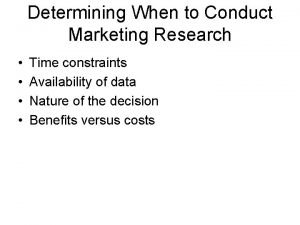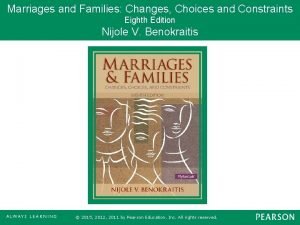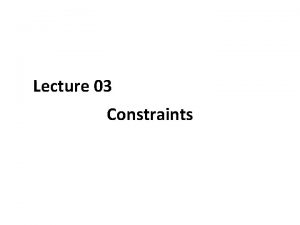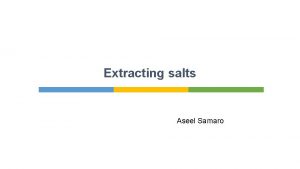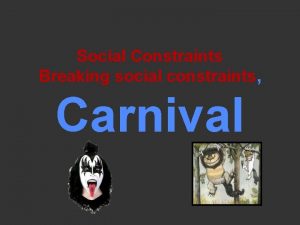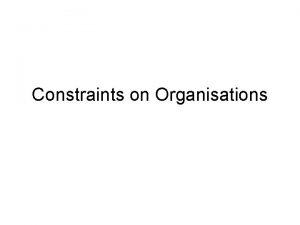Modeling Constraints Extracting constraints is what modeling is







- Slides: 7

Modeling Constraints Extracting constraints is what modeling is all about. But how do we express them? Examples: Keys: social security number uniquely identifies a person. Single-value constraints: a person can have only one father. Referential integrity constraints: if you work for a company, it must exist in the database. Domain constraints: peoples’ ages are between 0 and 150. Why are these constraints useful in the implementation?

Keys A set of attributes that uniquely identify an object or entity: Person: social security number name + address + age Perfect keys are often hard to find, but organizations usually invent something anyway. An object may have multiple keys: employee number, social-security number

Keys in ODL Interface Person (key ssn) { properties… } Defining multiple keys: (key ssn employe. ID (name address age))

Keys in E/R Diagrams name category price No formal way to specify multiple keys in E/R diagrams Product Person address name ssn

Single Value Constraints An entity (or object) may have at most one value for a given attribute or relationship. Person: name, social-security number Company: stock price How do we do this in ODL? In E/R, every attribute has at most one value. Arrows tell us about multiplicity of relations. If we have a single-valued constraint, we can either: 1. Require that the value exist (see referential integrity shortly) 2. Allow null values.

Referential Integrity Constraints A relationship has one value and the value must exist. Example: Product made. By Company: company must exist. How do we enforce referential integrity constraints? (otherwise, we get dangling pointers) - forbid to delete a reference object, or - delete the objects that reference an object we’re deleting. In E/R diagrams: Product makes Company

Weak Entity Sets Entity sets are weak when their key attributes come from other classes to which they are related. This happens if: - part-of hierarchies - splitting n-ary relations to binary. affiliation Team sport number University name





